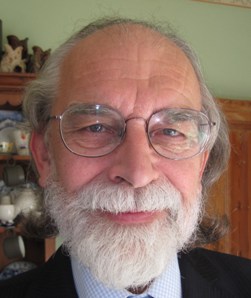
Mineral dust can be annoying and even hazardous. Brian Marker (left) and Hugh Datson (below) and think the time is ripe for a UK meeting on monitoring and abating it.
Geoscientist 22.01 February 2012
Mineral working gives rise to dust from extraction, handling, processing, transport, stripped areas, and waste tips and lagoons (especially in dry conditions). But it can be reduced through careful site, plant and equipment design, management and training. Even in the UK, despite all our planning, regulatory, health & safety constraints, we need to take a holistic approach to dust emissions at and beyond minerals sites.
It is not always obvious where dust comes from. The public may automatically blame a nearby quarry, while farming, roads, other industries or even natural sources as distant as North Africa may be overlooked. Establishing the origin and nature of dust deposits is therefore essential before effective action can be taken.
New best-practice guidance for the minerals industry (produced by AEA Technology for the Minerals Industry Research Organisation) sets out site-based strategies for dust management and control. To compliment this work, an evaluation of the impacts of dust beyond minerals sites is required.
When dust issues arise a number of questions follow. What is the source? What is its composition? How much has been emitted? How has it been transported and deposited? Does it cause annoyance? Is it potentially hazardous to people, livestock, wildlife or crops? Who, if anyone, is responsible? What, if anything, should be done? Answering these questions demands good monitoring and sampling both at emission and deposition.
Until recently, it has been difficult to secure adequate representative samples. Questions have been raised about the validity of sampling protocols (such as BS1747(5)). Samplers located on site might measure dust that doesn’t actually leave the site. Equipment beyond site boundaries might be tampered with. Care is needed in the transport, analysis and interpretation of samples, as well as calibration of data and interpretation. Models of dispersion require good data, at design stage, validation and subsequent practical use. Much work remains to be done on the health and environmental effects of dust emissions.
 As understanding improves, it is wise to re- examine the fitness of planning and environmental permit conditions. We feel that the time is right to review the state of the art and would be prepared to organise a meeting if there is sufficient interest from the geological and minerals communities.
As understanding improves, it is wise to re- examine the fitness of planning and environmental permit conditions. We feel that the time is right to review the state of the art and would be prepared to organise a meeting if there is sufficient interest from the geological and minerals communities.
More widely, IUGS Commission on Geoscience for Environmental Management has set up a Working Group on Dust (www.iugs-gem.org/dust) to air geological dust issues, not just from mineral working, but more widely. The Group met at the 4th International Medical Geology Conference (Bari, Italy September 2011), has a session at the 34th IGC in Brisbane, Australia in June 2012 and is seeking others at the European Geological Union meeting in Vienna in March 2012.
- If you are interested in giving a presentation at or attending a UK meeting on this subject please let either Brian Marker ([email protected]) or Hugh Datson ([email protected] ) know and steps will be taken to convene a meeting as soon as possible.
- Need to get it off your chest? Soapbox is open to any Fellow with a strong and maybe controversial opinion that they can express in 500 words. Write to the Editor [email protected].